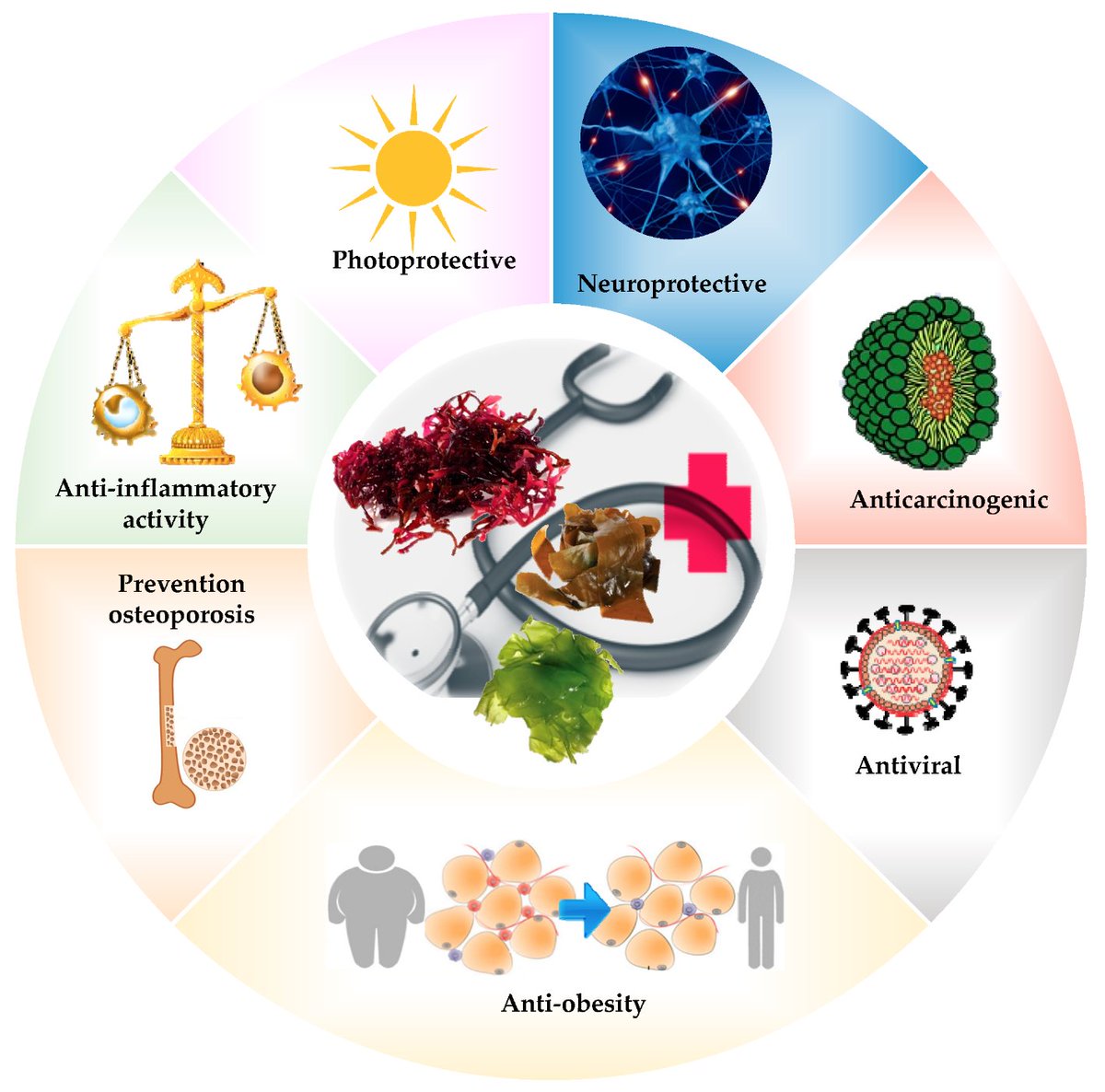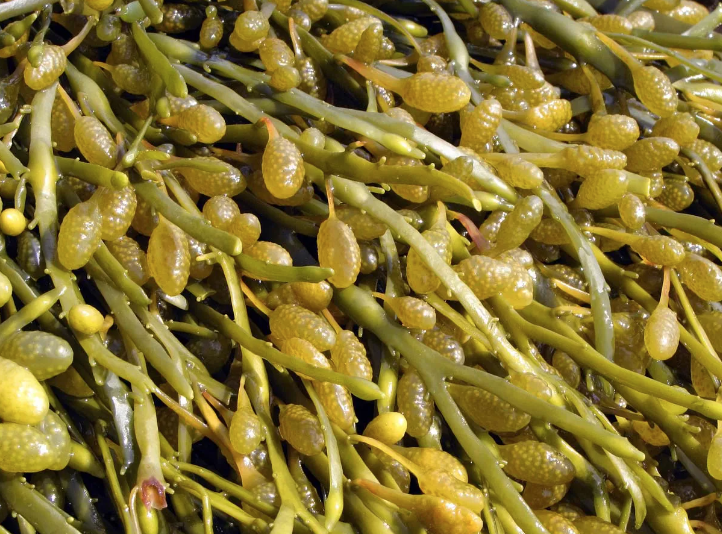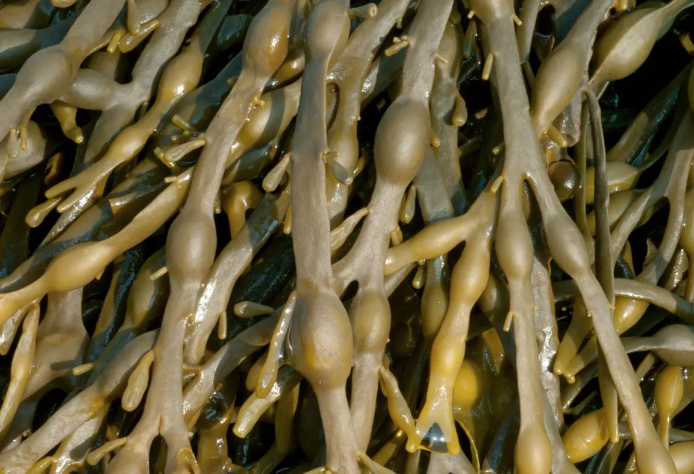Seaweed
The abundant natural medicine with anti-inflammation, anti-oxidation, anti-cancer, anti-viral, immunomodulation, cardioprotection, mood-boosting, and neuroprotective properties.
A THREAD 🧵


The abundant natural medicine with anti-inflammation, anti-oxidation, anti-cancer, anti-viral, immunomodulation, cardioprotection, mood-boosting, and neuroprotective properties.
A THREAD 🧵



Seaweed has been used and is continuing to be used traditionally as food in China, Japan, and Korea, as well as in some Latin American countries such as Mexico, for several centuries.
In 600 BCE, the Chinese writer Sze Teu wrote,
“Some algae are a delicacy fit for the most honoured guests, even for the King himself.” a statement that is now being appreciated in other countries that haven’t typically eaten them.
“Some algae are a delicacy fit for the most honoured guests, even for the King himself.” a statement that is now being appreciated in other countries that haven’t typically eaten them.
Documented evidence of this has been found in Chinese medical books called "The Compendium of Materia Medica," written by Shizhen Li in 1578.
Certain seaweeds were noted to treat thyroid-related diseases such as goitre, whilst others were said to have the ability to soften hard lumps, dispel nodes, eliminate phlegm, and induce urination in humans.
Seaweed are aquatic plant-like algae of simple structure with little or no cellular differentiation nor complex tissues. They are classified taxonomically into three groups: Chlorophyta, Phaeophyceae, and Rhodophyta, which correspond to green, brown, and red algae, respectively. 





Seaweeds are frequently subjected to harsh environmental conditions with no visible damage; as a result, they produce a wide range of metabolites (xanthophylls, tocopherols, and polysaccharides) in order to defend themselves from living and non-living factors.
These metabolites, as well as other nutritional components, are beginning to be recognised as a source of great pharmacological promise in modern medicine.
ncbi.nlm.nih.gov/pmc/articles/P…
ncbi.nlm.nih.gov/pmc/articles/P…
If you like my threads, then you may find if of interest to know that I source the information for it from my recently released book.
People are seeming to enjoy it!
Click on the link to find out more 👇🏾
callingouttheshots.xyz
People are seeming to enjoy it!
Click on the link to find out more 👇🏾
callingouttheshots.xyz

Overall, seaweed have a high protein content (higher in green and red seaweed compared to brown); are a good source of omega fatty acids; and have an abundance of essential minerals such as sodium, calcium, magnesium, potassium, chloride, sulphate, phosphorus, and micronutrients.
They are also an excellent source of vitamins A, B1, B12, C, D, and E; riboflavin; niacin; pantothenic acid; and folic acid, as well as containing other health-promoting bioactive compounds.
linkinghub.elsevier.com/retrieve/pii/S…
linkinghub.elsevier.com/retrieve/pii/S…
The typical brown colour of Phaeophyceae is due to the presence of a particular pigment called fucoxanthin. Studies showed that fucoxanthin has anticancer, antioxidant, and anti-obesity properties.
ncbi.nlm.nih.gov/pmc/articles/P…
ncbi.nlm.nih.gov/pmc/articles/P…
Phlorotannins are also very specific polyphenols present in brown algae and function to protect seaweeds from UV radiation, stress, and herbivory but also contribute to cell wall resistance.
Phlorotannins have shown antiviral, antioxidant, anti-inflammatory, anti-diabetic, and neuroprotective activities.
pubmed.ncbi.nlm.nih.gov/15056863/
pubmed.ncbi.nlm.nih.gov/15056863/
Brown seaweed also contains fucoidan, and fucoidan has been shown to possess anti-bacterial, antiviral, anti-inflammatory, antithrombotic, antidiabetic, anti-cancer, and procoagulant effects.
pubmed.ncbi.nlm.nih.gov/27346541/
pubmed.ncbi.nlm.nih.gov/27346541/
Secondary metabolites such as sesquiterpenes, diterpenes, triterpenes, and many others are abundant in marine red algae and have a variety of biological activities such as antifungal, antibacterial, and anticancer properties.
linkinghub.elsevier.com/retrieve/pii/S…
linkinghub.elsevier.com/retrieve/pii/S…
Carrageenans are sulfated polysaccharides present only in red algae and have shown antioxidant and antiviral characteristics, as well as strong cholesterol-lowering capabilities.
pubmed.ncbi.nlm.nih.gov/30840077/
pubmed.ncbi.nlm.nih.gov/30840077/
Green algae are green due to chlorophyll and carotenoids, owing to their antioxidant activities. The most important sulfated polysaccharide from the cell wall of green seaweeds is ulvan. Ulvan has shown antioxidant and cholesterol-lowering properties.
pubmed.ncbi.nlm.nih.gov/31730947/
pubmed.ncbi.nlm.nih.gov/31730947/
Epidemiological evidence indicates that seaweed-containing diets are inversely associated with all-cause mortality and cardiovascular disease mortality in Japanese adults.
ncbi.nlm.nih.gov/pmc/articles/P…
ncbi.nlm.nih.gov/pmc/articles/P…
And case control studies have shown an inverse relationship between seaweed consumption and stomach and colon cancer.
ncbi.nlm.nih.gov/pmc/articles/P…
ncbi.nlm.nih.gov/pmc/articles/P…
One randomised placebo-controlled clinical trial showed the use of the edible algal extract (Ulva Lactuca) daily for three months significantly improving the feeling of reduced ability to experience pleasure as well as sleep scores in those depressed.
pubmed.ncbi.nlm.nih.gov/29954354/
pubmed.ncbi.nlm.nih.gov/29954354/
With regards to COVID-19, one cell study showed sulfated polysaccharides having better SARS-CoV-2 blocking abilities than Remdesivir.
nature.com/articles/s4142…
nature.com/articles/s4142…
Another in vitro study of iota-, lambda-, and kappa-carrageenan sulfated polysaccharides extracted from red seaweed on SARS-CoV-2 Wuhan type and variants showed that all three carrageenan types had antiviral activity...
...with authors concluding that iota-carrageenan might be effective for prophylaxis and treatment of SARS-CoV-2 for existing and potentially future variants.
mdpi.com/1422-0067/22/2…
mdpi.com/1422-0067/22/2…
Plus, another review hypothesised that orally ingested seaweeds might exert direct antiviral effects against SARS-CoV-2 within the intestine through fucoidan and other components.
ncbi.nlm.nih.gov/pmc/articles/P…
ncbi.nlm.nih.gov/pmc/articles/P…
Nasal sprays may be the way forward, though. A meta-analysis of individual patient data from two randomised controlled trials found that nasal iota-carrageenan enhanced recovery rates and decreased the duration of protracted colds.
bpspubs.onlinelibrary.wiley.com/doi/10.1002/pr…
bpspubs.onlinelibrary.wiley.com/doi/10.1002/pr…
Long colds (lasting more than 20 days) were reduced by 71%. For coronavirus infections, the recovery rate increased by 139%, for influenza A infections by 119%, and for rhinovirus infections by 70%.
bpspubs.onlinelibrary.wiley.com/doi/10.1002/pr…
bpspubs.onlinelibrary.wiley.com/doi/10.1002/pr…
And an in vitro study showed that carrageenan-containing nose spray and mouth spray inhibit SARS-CoV-2 in human airway epithelial cells.
journals.physiology.org/doi/full/10.11…
journals.physiology.org/doi/full/10.11…
Though a non-toxic food, the overconsumption of seaweed, especially if sourced from polluted areas, is a concern. Seaweed is also known for its high iodine levels.
Iodine intake in Japan, known for their love of seaweed, varies from 0.1 to 20 mg/day, which can greatly exceed the official RDA of 150 mcg/day.
ncbi.nlm.nih.gov/pmc/articles/P…
ncbi.nlm.nih.gov/pmc/articles/P…
Seaweed consumption was linked to an increased risk of papillary thyroid carcinoma in Japanese postmenopausal women but not in premenopausal women
pubmed.ncbi.nlm.nih.gov/22414981/
pubmed.ncbi.nlm.nih.gov/22414981/
However, another study found no link between seaweed consumption and total thyroid cancer risk or papillary thyroid carcinoma in premenopausal or postmenopausal women.
pubmed.ncbi.nlm.nih.gov/26011104/
pubmed.ncbi.nlm.nih.gov/26011104/
Sufficient iodine levels are paramount to the proper functioning of the thyroid, but overconsumption has been linked to both overactive and underactive thyroid function.
pubmed.ncbi.nlm.nih.gov/8106628/
pubmed.ncbi.nlm.nih.gov/8106628/
Due to the unpredictability and excessive iodine concentration of seaweeds, the use of seaweed supplements is not suggested for pregnant women, with kelp-based products being of particular concern.
pubmed.ncbi.nlm.nih.gov/15220938/
pubmed.ncbi.nlm.nih.gov/15220938/
Plus, the interaction of iodine supplementation and exposure to heavy metals in seaweed, such as mercury, may further compromise thyroid function by lowering total T3.
pubmed.ncbi.nlm.nih.gov/25749125/
pubmed.ncbi.nlm.nih.gov/25749125/
The consumption of anti-thyroid compounds called goitrogens, such as soybeans, broccoli, and bok choy, may protect against high iodine levels, and intriguingly, many traditional Japanese dishes (such as soups) that contain seaweed also contain foods with a known goitrogen content
Another concern about seaweed consumption is exposure to heavy metals such as arsenic, aluminium, cadmium, lead, rubidium, silicon, strontium, and tin.
pubmed.ncbi.nlm.nih.gov/26817952/
pubmed.ncbi.nlm.nih.gov/26817952/
Cooking, boiling, and food processing operations may help minimise the amount of heavy metals in edible seaweeds; however, more studies are needed in this area.
pubmed.ncbi.nlm.nih.gov/27517127/
pubmed.ncbi.nlm.nih.gov/27517127/
9 g of Nori (the lowest source of iodine from seaweed) is estimated to be enough to meet your daily requirements of iodine when consumed.
A daily dosage of 2.4–8 mg of fucoxanthin has shown benefit in some human studies over a prolonged period of time.
examine.com/supplements/br…
examine.com/supplements/br…
• • •
Missing some Tweet in this thread? You can try to
force a refresh

 Read on Twitter
Read on Twitter










